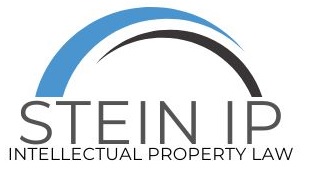- HOME
- > Blog Main Page
- > Trademark
- > Trademark “confusingly similar”
Trademark “confusingly similar”
by Skyelar Reel

When applying for a trademark, an applicant may face complications such as an application rejection due to various reasons. A “confusingly similar” rejection is issued when “the trademark examiner believes that there is a likelihood of confusion between your trademark and the mark of another,” whether a registered or pending mark (“BitLaw Guidance”).
The significance of identifying “confusing similarity” in a trademark is to prevent confusion by the public between marks and their goods and services provided.
When distinguishing between the two trademarks, the “examiner will consider both the similarities of the marks and the goods and services on which the marks are to be used” (“BitLaw Guidance”). Then, “the trademark examiner must consider whether there is a ‘likelihood of confusion’ or ‘confusing similarity’ between the applied-for mark and any existing marks” (“BitLaw Guidance”).
“Confusing similarity” is determined by several different factors including similarity of the marks, the similarity of the goods and services the marks are applied to, “their channels of trade,” proof of actual confusion, and “Dupont factors” (“BitLaw Guidance”).
Dupont factors were established by the case, “In re E.I. Du Pont de Nemours & Co. 476 F.2d 1357 (C.C.P.A. 1973)” in which Dupont, inventors of a cleaning agent for automobiles, had submitted a mark similar to that of Horizon, an all-purpose detergent (LexisNexis). This case set the precedent for a thorough review of trademark applications, the similarities between marks submitted and marks previously existing, and the marks’ trade networks.
Dupont factors are the following: “The (1) the similarity of the marks in appearance, sound, connotation, and commercial impression; (2) the similarity of the nature of the goods (relatedness); (3) the similarity of the trade channels; (4) the conditions in which the products are purchased; (5) the fame of the prior mark; (6) the nature of similar marks on similar goods; (7) the presence of actual confusion; (8) the length of time without actual confusion; (9) variety of goods on which a mark is used; (10) the market interface between the marks being disputed; (11) the extent to which a trademark holder has the right to exclude others from using the mark; (12) the extent of potential confusion; and (13) any other relevant facts” (Rogers).
Dupont factors are specifically meant to guide an examiner when reviewing marks. It lists the possible key identifications that may confuse the public. The weight of the Dupont factors vary from case to case, there is no specific rule that outlines which factors are more important than the others (Verna).
All marks must be “compared in their entireties” and so one case may violate multiple Dupont factors whereas another case may violate only one Dupont factor (Verna).
Thus, there are several factors that could affect the acceptance of a trademark, specifically if it is “confusingly similar” to a pre-existing one. It is always important to research and check if your trademark contains aspects that may confuse the public.
References:
“BitLaw Guidance.” How to Deal with a Confusingly Similar Rejection (Bitlaw Guidance),
www.bitlaw.com/guidance/trademark/dealing-with-a-confusingly-similar-rejection.html.
“BitLaw.” TMEP 1207.01: Likelihood of Confusion, Oct. 2017 Ed. (BitLaw),
www.bitlaw.com/source/tmep/1207_01.html.
Rogers, A. Rusty. “Fame, Wine, and Cigars: The Finer Points of the DuPont Factors.”
Osha Liang LLP, 10 July 2017, oshaliang.com/newsletter/famewineandcigars/.
“In Re E. I. Du Pont De Nemours & Co. – 476 F.2d 1357 (C.C.P.A. 1973).” Community, Lexis Nexis,
www.lexisnexis.com/community/casebrief/p/casebrief-in-re-e-i-du-pont-de-nemours-co.
Verna, Anthony. “What Are the DuPont Factors? Verna Law, P.C: an IP Law Firm.” Verna Law, P.C. – Intellectual Property Law Firm, Westchester County, New York, 9 Aug. 2017, vernalaw.com/what-are-the-dupont-factors/.

TAGS:
RECENT POSTS
